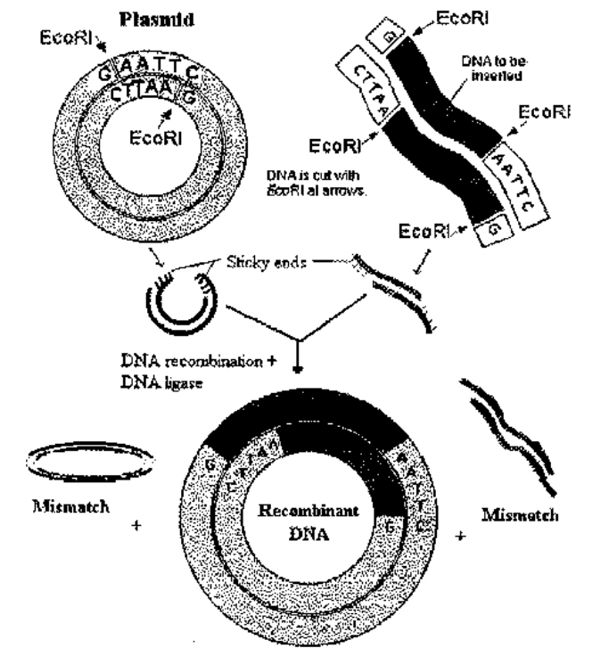 |
Fig.55 Inserting a DNA sample into a plasmid |
Recombinant DNA technology allows the DNA to be divided into small fragments which can be studied at the nucleotide level and analyzed functionally. The plasmid and foreign DNA are cut by this restriction andonuclease (ECORI in below example) producing intermediates with sticky and complimentary ends. Those two intermediate recombine by base paring and are linked by the action of DNA ligase. A new plasmid containing the foreign DNA as an insert is obtained. A few mismatches occur, producing an undesirable recombinant. The term recombinant DNA literally means the joining or recombining of two pieces of DNA from two different species. Recombinant DNA techniques allow an investigator to biologically purify (clone) a gene from one species by inserting it into DNA of other species, where it is replicated along with the host DNA. Actually the term includes a variety of molecular manoeuvres, including cleaving DNA by microbial enzymes called endonucleases, splicing or recombining fragments of DNA, inserting eucarotic DNA into bacteria so that large quantity of the foreign genetic material can be produced, determining the nucleotide sequence of a segment of DNA, and even chemically synthesizing DNA.[36]
 Prof. Dr. Sohan Raj Tater
Prof. Dr. Sohan Raj Tater
 Doctoral Thesis, JVBU
Doctoral Thesis, JVBU